This winter I nearly lost two Dwarf Brazilian Tree ferns (Blechnum brasiliense ‘Volcano’) to a hard frost. They can hopefully be saved, but it was a sober reminder that cold winters can hit some varieties hard. For gardeners in climates with harsh winters, it pays to know the most cold hardy varieties of fern, so you can be confident that they will make it through to the spring in good health.
The most cold hardy varieties of fern are among the Adiantum species of maidenhair fern and the Osmunda species of Cinnamon and Interrupted ferns, which can survive temperatures as low as -40 °F (-40 °C). A wide range of evergreen and deciduous ferns can tolerate cold in the -30 to -20 °F range (-34 to -29 °C), including popular varieties such as Japanese painted ferns, Ostrich ferns and many Dryopteris species.
These varieties will survive the winters in all but the most northerly states (and Scandinavian countries of Europe), and bounce back with vigor in the spring. For southern and pacific coast states, the choice is even wider, with many ferns being hardy down to the typical lows of 10-20 °F (-12 to -7 °C).
To avoid my mistake, and plan your own planting scheme effectively, it pays to plan ahead and check the hardiness of any fern variety you want to try.
The most cold hardy ferns
The most challenging winter conditions will be found in Alaska, Minnesota, and the northern states along the Canadian border, and in northern Sweden and Finland in Europe. These regions are in USDA hardiness zones 2 and 3, where winter temperatures can drop to -40 to -50 °F. Despite this extreme freeze, there are some fern varieties that can survive.
The Northern maidenhair fern (Adiantum pedatum) is hardy down to zone 2, and has the classically beautiful, delicate fronds of the maidenhair varieties, with pale pinnae on black stalks.

Northern maidenhair fern
- Adiantum pedatum
- Deciduous
- Partial or full shade
- Height: up to 0.5 m
- Soil: acid, neutral or alkaline. Moist, well-drained.
Several other Adiantum ferns are also very hardy, including the Eastern and Aleucian maidenhairs, which can survive in zone 3 winters.
Another genus that has several varieties that are hardy down to -40 °F is Osmunda. Cinnamon and Interrupted ferns will survive zone 2, and the stately Royal fern can survive in zone 3. These are all tall-growing varieties, with distinctive fertile fronds that form brown spires distinct from the green sterile fronds that surround them.

Cinnamon fern
- Osmunda cinnamomea
- Deciduous
- Prefers partial shade
- Height: up to 1.5 m
- Soil: acid. Moist, poor drainage tolerated.
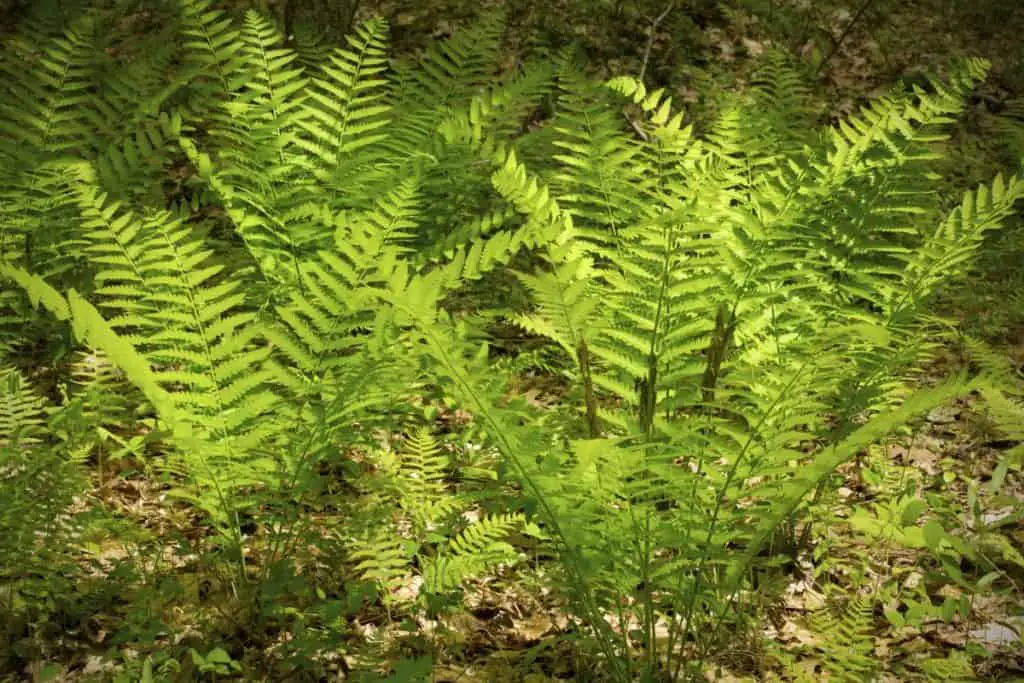
Interrupted fern
- Osmunda claytoniana
- Deciduous
- Prefers partial shade
- Height: up to 1 m
- Soil: acid. Moist, poor drainage tolerated.
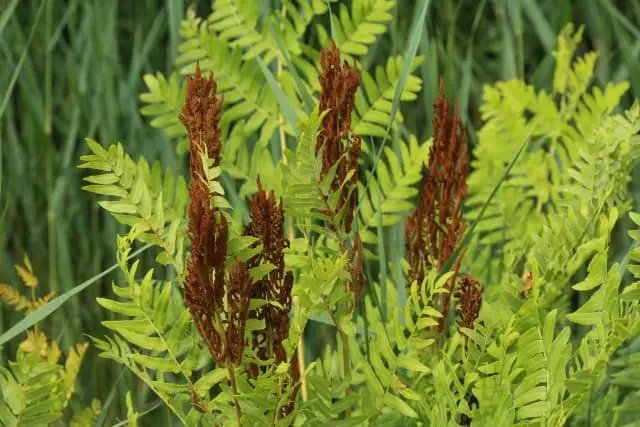
Royal fern
- Osmunda regalis
- Deciduous
- Full or partial shade, and full sun
- Height: up to 2.5 m
- Soil: acid, neutral or alkaline. Moist, poor drainage tolerated.
Other especially hardy ferns include the (ironically named) Sensitive fern (Onoclea sensibilis).

Sensitive fern
- Onoclea sensibilis
- Deciduous
- Full or partial shade
- Height: up to 0.5 m
- Soil: acid or neutral. Moist, poor drainage tolerated.
This is found naturally throughout northern states and Canada, and has an attractive and unusual broad frond pattern.
Another variety that is hardy in zone 2 is the Beech fern (Phegopteris connectilis). This has an unusual form, with bright green fronds on a long stipe. The bottom two pinnae jut out at an angle, giving it a distinctive appearance.
Finally, the Brittle bladder fern (Cystopteris fragilis) can also survive in zone 2, and has delicate pale green pinnae. Curiously, the shape of the pinnae seems to vary with climate.
If we expand our search beyond zone 2 into more temperate climates, there are many more options available. For most of the continental US and continental Europe, ferns hardy to a lower limit of -20 °F (-29 °C) will do just fine. This translates to USDA hardiness zone 5, which allows for a much wider choice of ferns. There is even scope to be choosy about whether to opt for evergreen or deciduous varieties.
Cold hardy evergreen ferns
Several varieties of fern with a fishbone or sawtooth-like appearance are cold hardy. Examples include the Christmas fern, Hard fern and common Polypody.
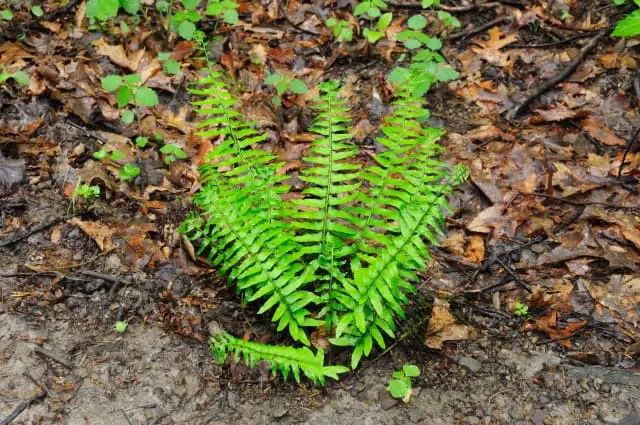
Christmas fern
- Polystichum acrostichoides
- Evergreen
- Partial shade
- Height: up to 1 m
- Soil: acid, neutral or alkaline. Moist, well-drained.
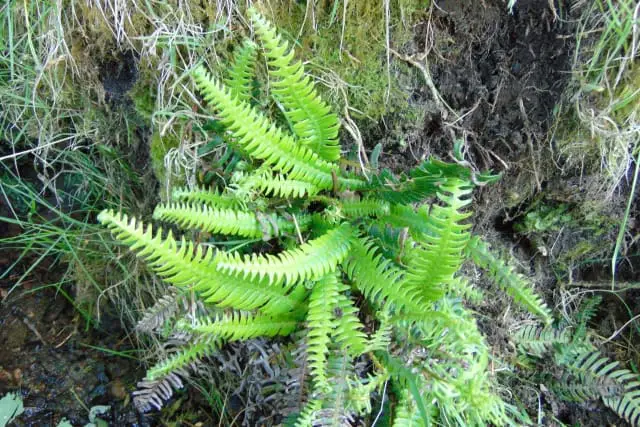
Hard fern
- Blechnum spicant
- Evergreen
- Prefers partial or full shade
- Height: up to 0.5 m
- Soil: acid or neutral. Moist, poor-drainage tolerated.
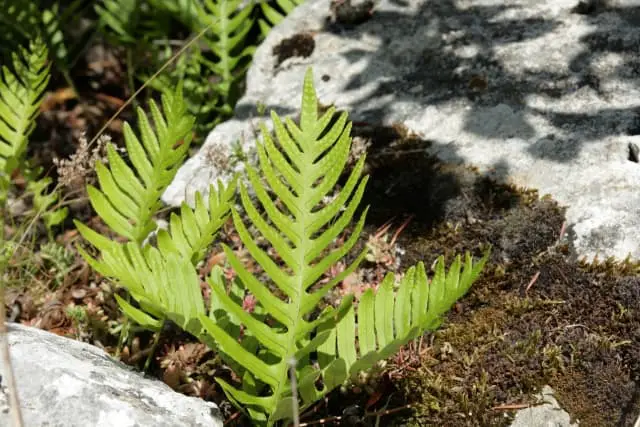
Common polypody
- Polypodium vulgare
- Evergreen
- Partial shade or full sun
- Height: up to 0.5 m
- Soil: Neutral or alkaline. Moist, well-drained.
For a more classic feathery appearance, the soft shield fern is a good choice.
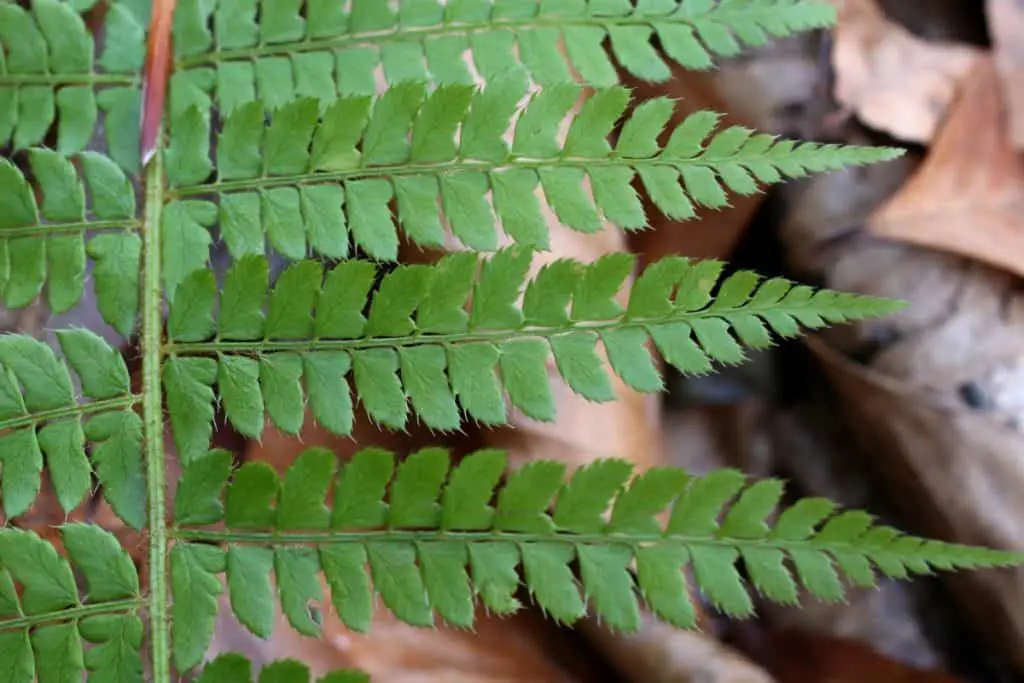
Soft Shield fern
- Polystichum setiferum
- Evergreen
- Full or partial shade
- Height: 0.5 – 1 m
- Soil: Acid, neutral or alkaline. Moist, well-drained.
In this category, we could also include the King fern and Autumn fern, both of which are perennially popular. As a note, though, these varieties can be semi-evergreen at colder temperatures, and will generally do better in zones 6 and above.
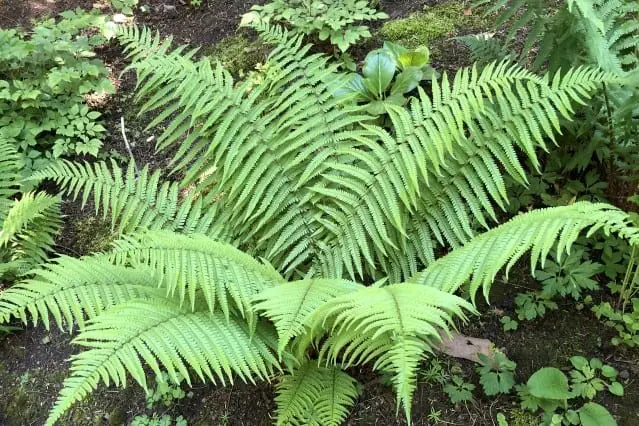
King fern
- Dryopteris affinis
- Semi-evergreen
- Shade, partial or full sun
- Height: up to 1.5 m
- Soil: acid, neutral or alkaline. Moist, well-drained.
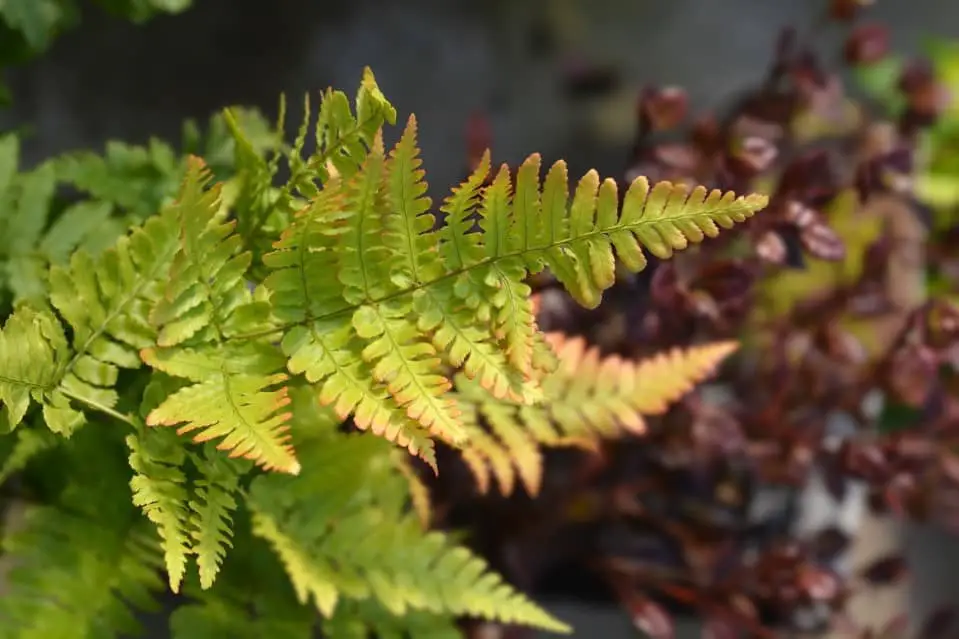
Autumn fern
- Dryopteris erythrosora
- Semi-evergreen
- Full or partial shade, and full sun
- Height: up to 1 m
- Soil: tolerant of most pH and drainage conditions.
Finally, for a more rounded, compact frond pattern, the maidenhair spleenwort is a good option.
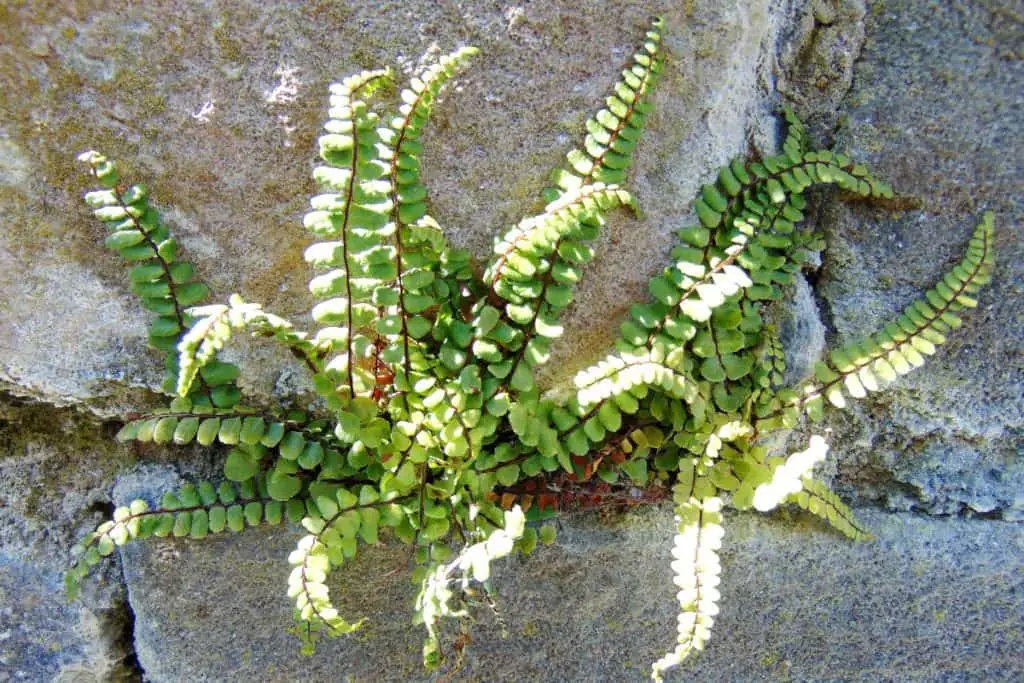
Maidenhair spleenwort
- Asplenium trichomanes
- Evergreen
- Full or partial shade
- Height: up to 0.3 m
- Soil: neutral or alkaline. Moist, well-drained.
Cold hardy deciduous ferns
Perhaps the most popular fern for the garden is the Japanese painted fern.
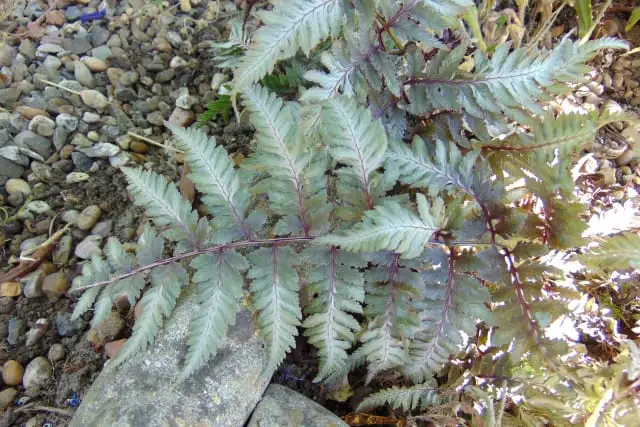
Japanese painted fern
- Athyrium niponicum
- Deciduous
- Prefers partial shade
- Height: up to 0.5 m
- Soil: acid, neutral or alkaline. Moist, well-drained.
This variety is cold hardy, but the limits of temperature do vary between cultivars. The common Athyrium niponicum ‘Pictum’ can be hardy to zone 5, but other cultivars are more tender.
The original Lady fern is hardy to zone 3, and a wonderful addition to any planting scheme. The fronds emerge as a delicate pale green in spring, and provide the classic fern texture and shape.
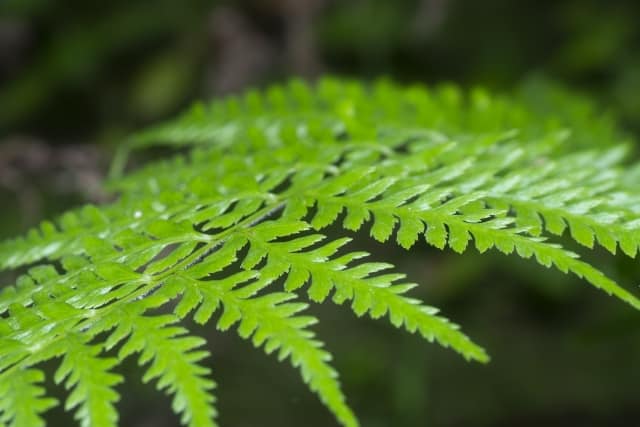
Lady fern
- Athyrium filix-femina
- Deciduous
- Prefers partial or full shade
- Height: up to 1 m
- Soil: acid or neutral. Moist, poor drainage tolerated.
Several deciduous Dryopteris species ferns are cold hardy, including the Male fern, Crested Buckler fern (Dryopteris cristata), Clinton’s Wood fern (Dryopteris clintoniana), and Goldie’s fern (Dryopteris goldiana).
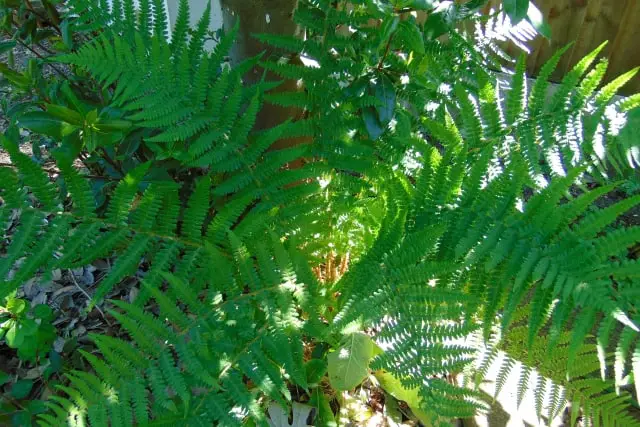
Male fern
- Dryopteris filix-mas
- Deciduous
- Prefers partial or full shade
- Height: up to 1.5 m
- Soil: acid, neutral or alkaline. Moist, poor drainage tolerated.
Another popular garden variety with a beautiful, bushy appearance (but tendency to spread) is the Ostrich fern, which is hardy to zone 3.
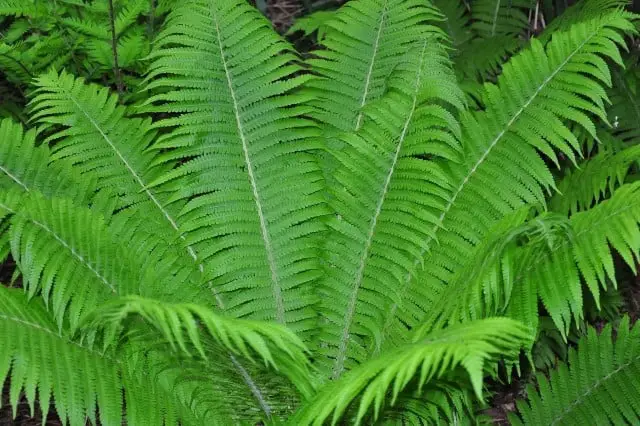
Ostrich fern
- Matteuccia struthiopteris
- Deciduous
- Full or partial shade
- Height: up to 1.5 m
- Soil: acid or neutral. Moist, well-drained.
Finally, another cold hardy variety that has distinctive pale green fronds and can also tolerate waterlogged ground is the Marsh fern.

Marsh fern
- Thelypteris palustris
- Deciduous
- Partial or full shade
- Height: up to 1 m
- Soil: acid or neutral. Moist, tolerates poor drainage.
How to protect less hardy varieties
Despite the many options available for cold hardy ferns, there are some varieties that just cannot tolerate a deep freeze.
Tree ferns are amazing, sculptural plants, but are only really hardy to zones 8 or 9 (10 to 30 °F, or -12 to -1 °C). Similarly, many of the prettiest fern varieties are tender, including the Dwarf Brazilian ferns that suffered through the last winter in my fernery.
If, like me, you want to succeed with growing some of these varieties of ferns for their beauty outside of their usual hardiness limits, there are a couple of strategies available.
The first is to grow the more sensitive ferns in pots, that can be brought inside or under glass cover over winter. If you have the space and resources then a glasshouse can be a great way to cultivate tender ferns all year round.
An alternative approach is to protect the ferns where they grow in the yard. For tree ferns this is the only viable option, and the simplest strategy is to pack insulation around the growth zone to trap warmth at the most tender part of the plant and prevent frost damage. Straw, fleece, coir, or even dead leaves can be used to insulate, but must also be kept dry to avoid freezing.
Even in the extreme climates of North America and Scandinavia there are many fern varieties that can survive through even the harshest winter. In most of the US and Europe there are dozens of good options available, with all shapes, sizes and colors of ferns able to weather the subzero temperatures of a cold spell. The key is to match the right species to the hardiness zone of your garden, or take steps to protect less hardy varieties over winter.
